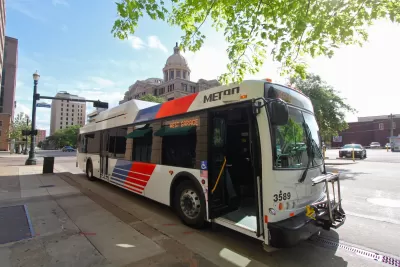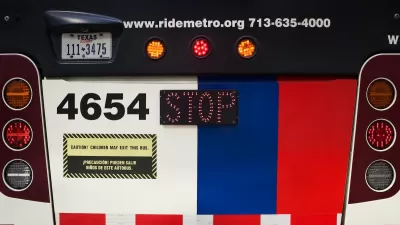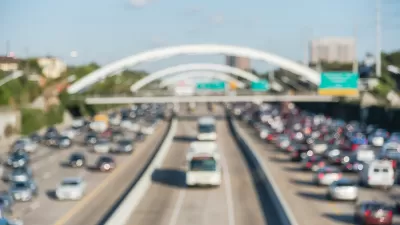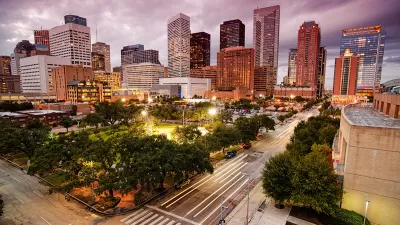Hindered by the pandemic and other factors, ridership numbers have been disappointingly low on the city's first BRT, but Metro officials are undeterred in their plans for future BRT lines.

Houston's new Silver Line bus rapid transit (BRT) line is seeing disappointingly low ridership in its first year and a half of operation, reports Dug Begley. "The line, which comes every 12 minutes and avoids Galleria-area congestion, is a vital route for those using it, but carrying less than 10 percent of the riders it was built for on opening day." The line is serving fewer than 800 riders a day, far fewer than the 12,000 daily riders predicted by Metro. "Park and ride service, which was expected to be a big lure for commuters into Uptown to hop the Silver Line, dropped from 33,000 trips on a typical day in the region to fewer than 4,000 when the BRT began operating on Post Oak."
But the city's transit officials are cautiously optimistic about the future of its other BRT projects, calling them "50-year projects" whose ridership will grow with time. "Many of those plans feed into major routes, including the Silver Line. As part of the $7.5 billion plan approved by voters in 2019, Metro anticipates making high occupancy toll lanes along many freeways bi-directional, meaning bus lanes both ways for park and ride lines to Uptown and downtown Houston, feeding into the Uptown transit center."
FULL STORY: Uh oh, Silver: Houston's first bus rapid transit line carries only fraction of ridership Metro predicted

Planetizen Federal Action Tracker
A weekly monitor of how Trump’s orders and actions are impacting planners and planning in America.

Maui's Vacation Rental Debate Turns Ugly
Verbal attacks, misinformation campaigns and fistfights plague a high-stakes debate to convert thousands of vacation rentals into long-term housing.

Restaurant Patios Were a Pandemic Win — Why Were They so Hard to Keep?
Social distancing requirements and changes in travel patterns prompted cities to pilot new uses for street and sidewalk space. Then it got complicated.

In California Battle of Housing vs. Environment, Housing Just Won
A new state law significantly limits the power of CEQA, an environmental review law that served as a powerful tool for blocking new development.

Boulder Eliminates Parking Minimums Citywide
Officials estimate the cost of building a single underground parking space at up to $100,000.

Orange County, Florida Adopts Largest US “Sprawl Repair” Code
The ‘Orange Code’ seeks to rectify decades of sprawl-inducing, car-oriented development.
Urban Design for Planners 1: Software Tools
This six-course series explores essential urban design concepts using open source software and equips planners with the tools they need to participate fully in the urban design process.
Planning for Universal Design
Learn the tools for implementing Universal Design in planning regulations.
Heyer Gruel & Associates PA
JM Goldson LLC
Custer County Colorado
City of Camden Redevelopment Agency
City of Astoria
Transportation Research & Education Center (TREC) at Portland State University
Jefferson Parish Government
Camden Redevelopment Agency
City of Claremont





























